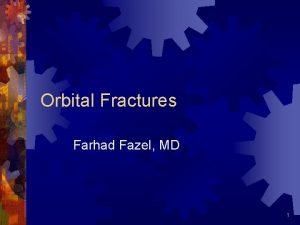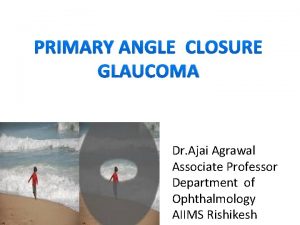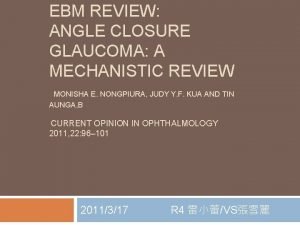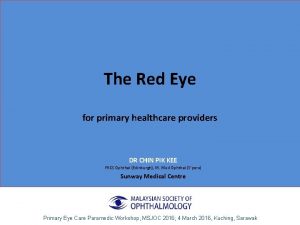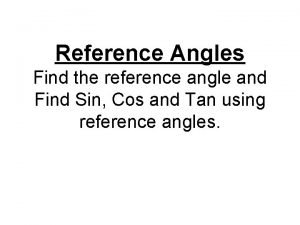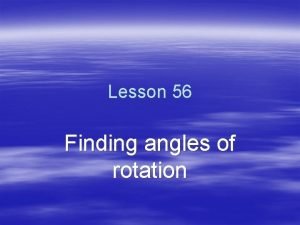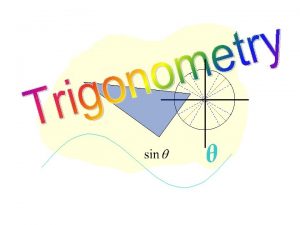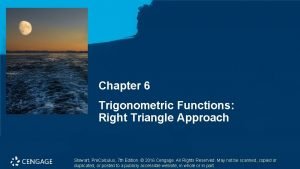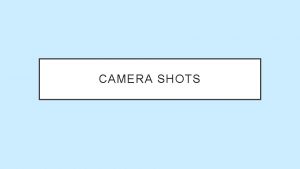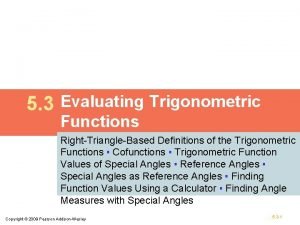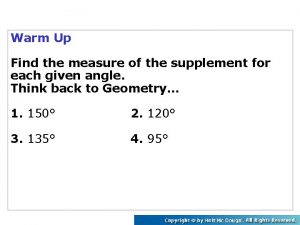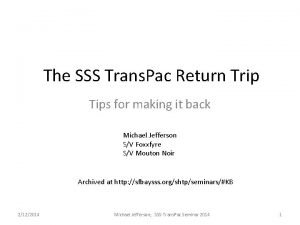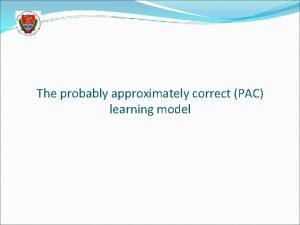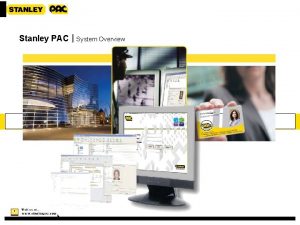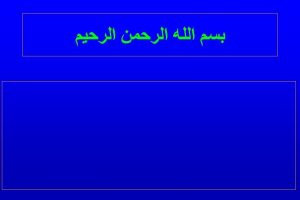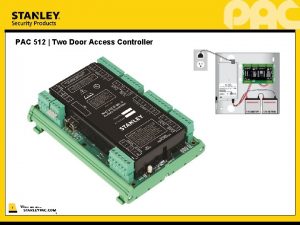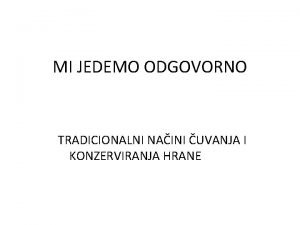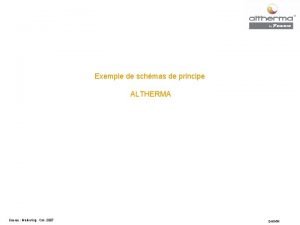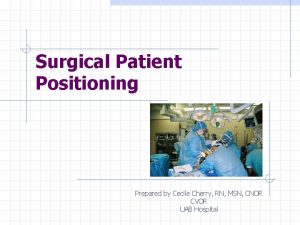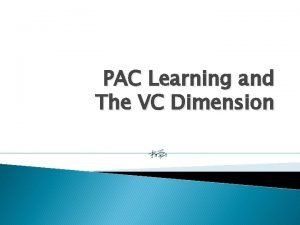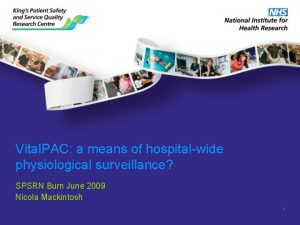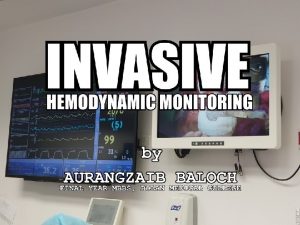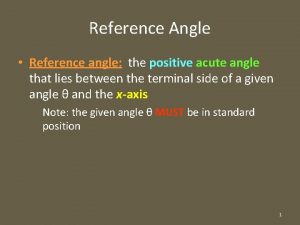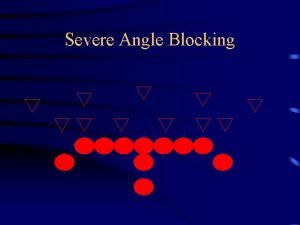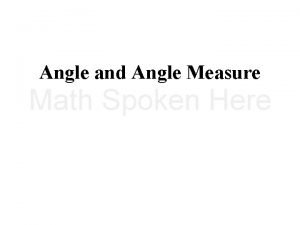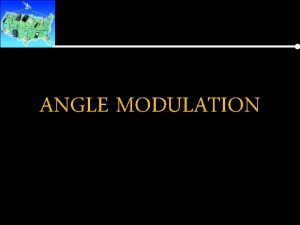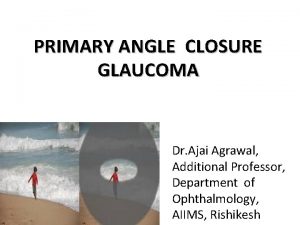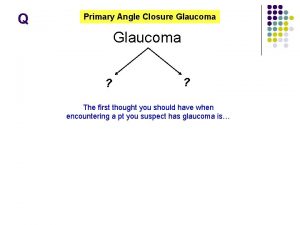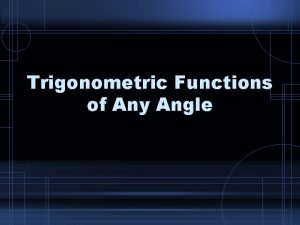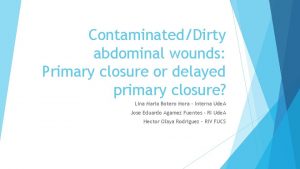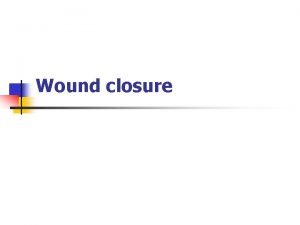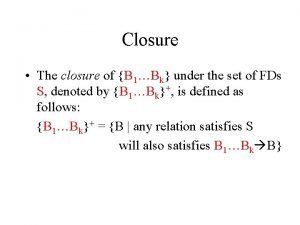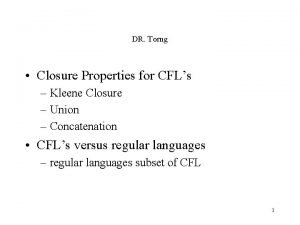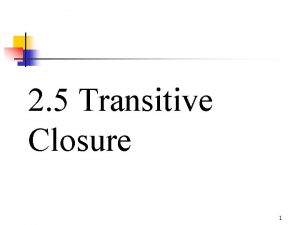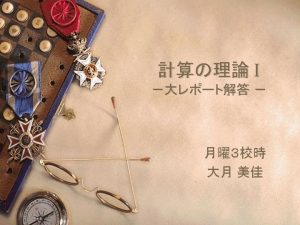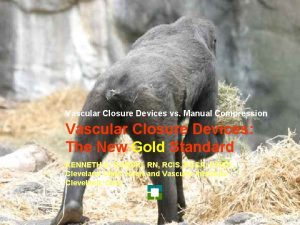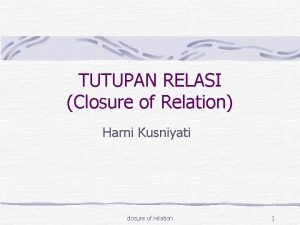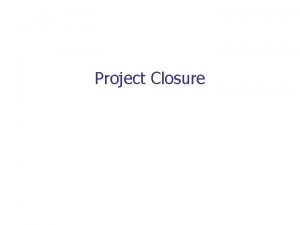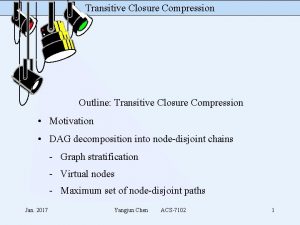Primary Angle Closure PAC F Fazel MD Reference






































- Slides: 38

Primary Angle Closure (PAC) F. Fazel MD Reference: PPP American academy of ophthalmology 2010

Aqueous Flow

Anterior chamber angle

Anterior chamber angle

Angle Closure: Disease Definition Appositional or synechial closure of AC angle. ¥ Pupil block is key element. ¥ Pressure of PC is higher than AC causing ant -bowing of iris and crowd the angle. ¥ Pupil dilatation and thickening of lens increase pressure disparity of two chambers. ¥ Other mechanisms(position and thickness of CB, location of iris insertion, volume of iris, . . ). ¥ Lens size, position, shape play important role. ¥

Definition cont. . ¥ Contact of iris periphery with TM lead to functional damage of TM and PAS formation. ¥ PAC may occur as Acute form or Chronic. ¥ Secondary form of angle closure (ICE syndrome, inflammation, or neovascularization)

Relative pupilary block

Normal angle vs shallow angle

Anerior Chamber Depth

Classification ¥ Primary angle closure suspect(more than 180 degree ITC). ¥ Primary angle closure glaucoma(>180 ITC and elevated IOP and optic neuropathy). ¥ Acute Angle Closure Crisis(sudden obstruction of angle , rapidly rise IOP)

Risk Factors Demographic Factors ¥ ¥ Family history Older age Female sex Asian or Inuit descent Ocular Factors ¥ ¥ ¥ Hyperopia Shallow peripheral and central AC depth Steep corneal curvature Thick crystalline lens Short axial length

Natural History ¥ PAC is bilateral. ¥ 90% of acute attack are unilateral. ¥ In ACCC optic neuropathy rapidly developed ¥ Fellow phakic eye are at risk ¥ Significant visual morbidity after ACCC

Diagnosis of ACCC Sign &symptom ¥ ¥ ¥ Pain Redness Congestion Decrease vision Corneal edema Very high IOP History ¥ ¥ ¥ Symptom of intermittent angle-closure attack(blurred vision, halos around light, eye pain, headache, eye redness) Family history Medication(sulfanamide, t opiramate, phenothiazine, anticholinergics)

Ophthalmic Examination Refractive status ¥ Hyperopia(narrow AC angle) Pupil ¥ ¥ ¥ Size and shape(assymetric and oval) Reactivity(mid-dilate and poorly reactive) RAPD

Slit-lamp biomicroscopy ¥ Conjunctival hyperemia ¥ Narrow AC depth ¥ AC inflammation ¥ Corneal swelling ¥ Iris abnormality(focal or diffuse atrophy, irrigular pupil, PS, . . ) ¥ Lens change(glaucomflecken, cataract) ¥ Corneal endothelial cell loss

Examination Determination of IOP ¥ ¥ Goldman applanation Ccc measurement postponed Gonioscopy ¥ ¥ Of both eyes is mandatory To determine appositional closure, PAS and extend of them Topical glyserin in corneal edema. Compression (indentation) gonioscopy is more helpful

Other Exams ¥ Immaging (UBM, OCT…) ¥ Provocative test ¥ Fundus exam

AACC

Bilateral AACC

AACC

Differential diagnosis(PAC is bilateral) ¥ ¥ ¥ ¥ NVG Inflammation and PS formation ICE Uveal effusion of drugs Malignant glaucoma Lens induced Nanophthalmus, ROP, PHPV ¥ ¥ Iris or CB mass Aphakia without PI, phakic IOL, AC IOL, silicon oil Trauma Epithelial downgrowth

Management : Goals ¥ Reverse or prevent angle-closure process ¥ Control IOP ¥ Prevent damage to optic nerve

Management : Step 1 Lowering IOP to relieve acute symptom and potentially harmful high IOP. Reduced inflammation ¥ ¥ ¥ Medical therapy Peripheral laser iridoplasty paracentesis

Medical Therapy ¥ ¥ ¥ Topical Beta-blocker Topical Alpha Agonist Topical and systemic CAI Topical miotics Systemic hyperosmotic Topical steroid ¥ ¥ ¥ Timolol or Betaxolol Brimonidin or alphagun Acetazolamide: IV-PO Pilocarpin Glycerin or Manitol Prednisolone or dexa

Failed medical therapy or laser iridotomy ¥ Laser peripheral iridoplasty ¥ Paracenthesis ¥ Incisional iridectomy

Relieves pupilary block: Step 2 (AS SOON AS POSSIBLE) ¥ Laser iridotomy ¥ Corneal indentation(four-mirror, cottontipped applicator, or tip of muscle hook)

Laser iridotomy

Fellow-eye management: Step 3 ¥ Immediate laser iridotomy.

Natural History ¥ Rapid glaucomatous optic neuropathy if ACCC not treated ¥ Decrease RNFLwithin 16 week after ACCC ¥ 18% blindness, 48% glaucomatous optic neuropathy, 58% vision worse than 20/40.

Follow-up Evaluation: Step 4 ¥ After PI patient may have open angle or open sector with PAS. ¥ Evaluate patency of PI ¥ IOP measurment ¥ Gonioscopy ¥ Fundus exam


Laser Peripheral Iridotomy(LPI) ¥ ¥ ¥ Superior iris or 3 -or 9 oclock Laser setting(4 -7 mj) Abraham YAG iridotomy lens prependicular to laser beam Iris crypt if possible See the gush of posterior iris pigment

Abraham YAG-Laser lens

Effect of laser iridotomy

Laser iridoplasty ¥ Low power(150300 mw), large spot(500 mic)long duration(0. 2 -0. 5 s)argon laser , 5 -6 spot in periphery.

Type of Gonioscopy lenses

Indentation gonioscopy

Four Mirror lens
 Mina fazel
Mina fazel Farhad fazel
Farhad fazel Primary angle closure glaucoma
Primary angle closure glaucoma Primary angle closure glaucoma
Primary angle closure glaucoma Circumcorneal flush
Circumcorneal flush Reference node and non reference node
Reference node and non reference node Reference node and non reference node
Reference node and non reference node Find reference angle
Find reference angle What is the reference angle for 292°
What is the reference angle for 292° Define reference angle
Define reference angle Tan 30 degrees unit circle
Tan 30 degrees unit circle How to find a reference angle
How to find a reference angle Low angle shot reference
Low angle shot reference Trigonometric functions values
Trigonometric functions values High angle shot reference
High angle shot reference Sum
Sum Stanley pac software manual
Stanley pac software manual Pac learning model
Pac learning model Stanley pac reader
Stanley pac reader Ipo programming
Ipo programming What is pac u
What is pac u Stanley pac reseller
Stanley pac reseller Kvarenje mesa u pacu
Kvarenje mesa u pacu Youtube
Youtube Daikin altherma schema hydraulique
Daikin altherma schema hydraulique Pacs medical abbreviation
Pacs medical abbreviation Stanley pac fob programming
Stanley pac fob programming Pac learning model in machine learning
Pac learning model in machine learning Pressure points of supine position
Pressure points of supine position Pac concept
Pac concept Capture beat
Capture beat Vc dimension rectangle
Vc dimension rectangle Pac learning model in machine learning
Pac learning model in machine learning Wingraf
Wingraf Vital pac
Vital pac Hình ảnh chế độ a pác thai
Hình ảnh chế độ a pác thai Pac pulmonary artery catheter
Pac pulmonary artery catheter Elder pac
Elder pac Pac beau
Pac beau

